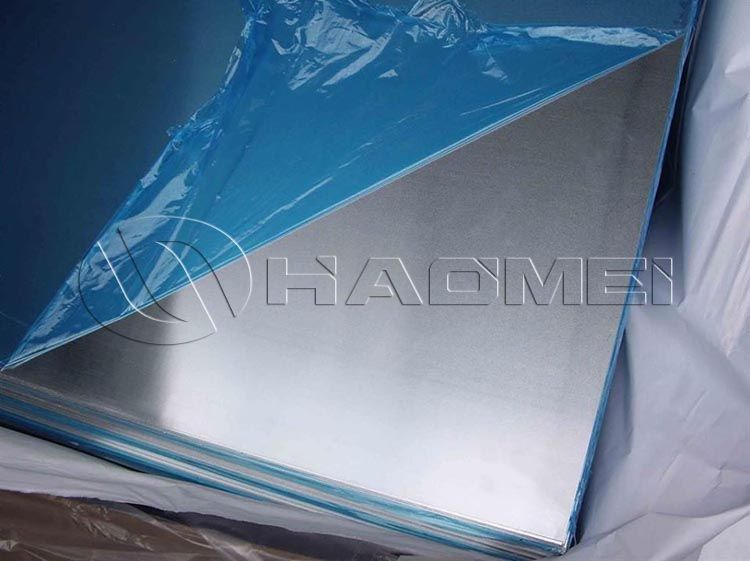5083 h32 h111 Aluminum Sheet
In tank truck manufacturing, "lightweight" and "corrosion resistance" are two core requirements. The former directly affects transportation fuel consumption and load efficiency, while the latter determines the tank truck's service life (especially for specialized media such as chemicals and food).
 5083 aluminum plate, with its unique alloy composition and processing properties, has become the preferred material for tank truck body construction. It is a rust-resistant Al-Mg (aluminum-magnesium) alloy with a magnesium content of approximately 4.0%-4.9%. This composition gives it two core advantages:
5083 aluminum plate, with its unique alloy composition and processing properties, has become the preferred material for tank truck body construction. It is a rust-resistant Al-Mg (aluminum-magnesium) alloy with a magnesium content of approximately 4.0%-4.9%. This composition gives it two core advantages:
Extreme corrosion resistance: The addition of magnesium gives 5083 aluminum excellent resistance to corrosion in marine atmospheres and industrial environments. Even with long-term contact with chemical liquids (such as dilute acids and alkalis) or food-grade media (such as cooking oil and drinking water), it is not susceptible to oxidation leakage, eliminating the need for frequent anti-corrosion treatments.
High specific strength: At the same weight, 5083 alloy's strength far exceeds that of ordinary carbon steel (tensile strength of approximately 270-350 MPa). Using it to manufacture tank truck bodies can reduce weight by 30%-40% while maintaining the tank's resistance to deformation (for example, to withstand bumps and pressure shocks during transportation).
Furthermore, 5083 aluminum sheet also has excellent weldability. Tank truck bodies require splicing and welding, but 5083 aluminum sheet maintains weld strength and corrosion resistance without the need for complex heat treatment after welding, significantly reducing manufacturing costs. This is a key reason why it has become the mainstream material for tank trucks, replacing traditional carbon steel and stainless steel.
5083 H32
1. Core Performance
Mechanical Properties: The tensile strength of the 5083 h32 aluminum sheet approximately 310 MPa, yield strength approximately 250 MPa, and elongation approximately 15%—compared to standard 5083 in its base state, this represents a nearly 20% increase in strength, allowing it to withstand greater pressure and impact.
Processing Characteristics: After hardening, H32 aluminum sheet exhibits increased hardness (Vickers hardness approximately 80 HV), yet still retains a certain degree of cold forming capability. It can be formed into rounded tank body sections through processes such as bending and rounding. However, it is not suitable for complex deep drawing (such as special-shaped joints on tank bodies).
2. Tank Truck Applications
Heavy-Duty Tank Trucks: These tank trucks need to withstand the weight of the material, and H32's high yield strength prevents bulging and deformation.
High-Pressure Tank Trucks: For example, tank trucks transporting liquefied natural gas (LNG) and compressed air typically operate at pressures between 0.8 and 1.6 MPa. H32's high strength ensures the tank's tightness and safety under high pressure.
Critical Tank Parts: Even standard liquid tank trucks use H32 aluminum sheet in stress-bearing areas such as the tank's "reinforcement ribs" and "head," enhancing overall structural strength.
5083 H111
1. Core Performance
Mechanical Properties: The tensile Strength of Al 5083 h111 is 270MPa, yield strength is 110MPa, and elongation is 22%—Lower strength than H32, but higher elongation, meaning it has greater "plasticity" and can easily handle complex processes such as bending, deep drawing, and spinning.
Processing Characteristics: Annealing treatment reduces the hardness of H111 aluminum sheet (Vickers hardness ~60HV), making it less prone to cracking during processing and achieving a higher surface flatness, making it suitable for parts requiring precise forming. Annealing also eliminates internal stress, preventing deformation of the can body due to stress release during long-term use. Corrosion resistance is also more stable than H32 (no risk of microcracking associated with hardening).
2. Tank Truck Applications
Light-load liquid tank trucks: For example, tank trucks transporting edible oil, drinking water, and daily chemicals typically have a load capacity of 10-20 tons. H111's strength is sufficient to meet these requirements, and its easy formability allows it to adapt to multiple interfaces on the tank body (such as feed, discharge, and cleaning ports).
Complex molded parts: For non-planar components such as tank trucks' "elliptical heads" and "conical bottoms," deep drawing or spinning processes are required. H111's high plasticity prevents cracking during processing.
Food-grade tank trucks: Due to its smoother annealed surface, H111 eliminates the risk of stress corrosion. It also meets food hygiene standards, reduces residual media, and facilitates cleaning (e.g., milk tank trucks).
Original Source:https://www.aluminumtankerplate.com/a/5083-h32-h111-aluminum-sheet.html
Tags: 5083 aluminum plate ,
Prev:5083 and 5182 Aluminum Sheet Coil
Next:Development of Aluminum Alloy Tankers in Different Countries
